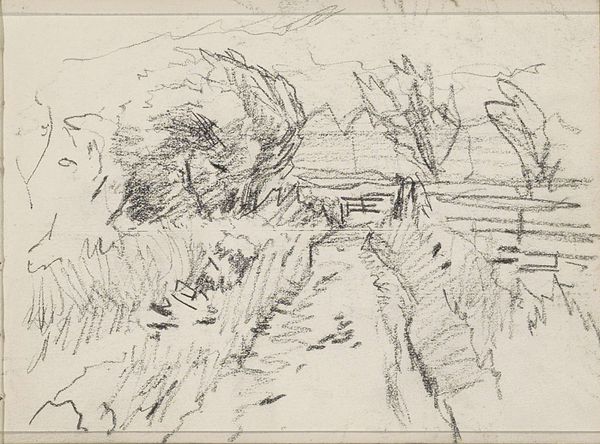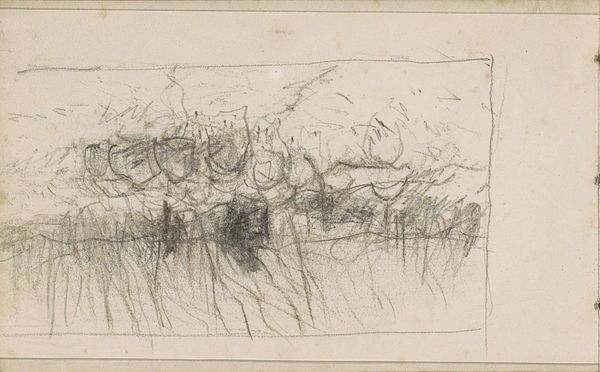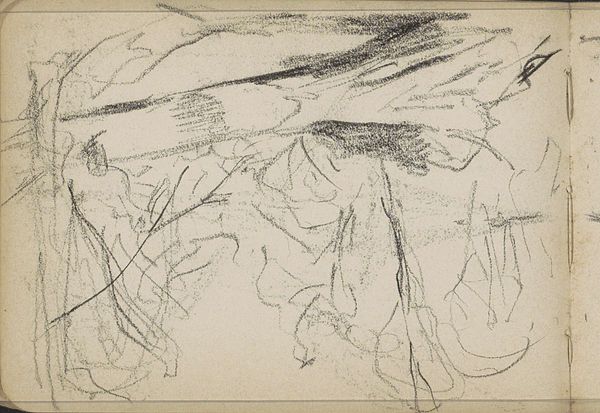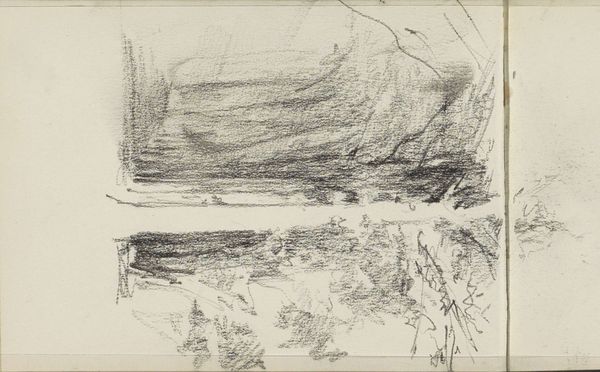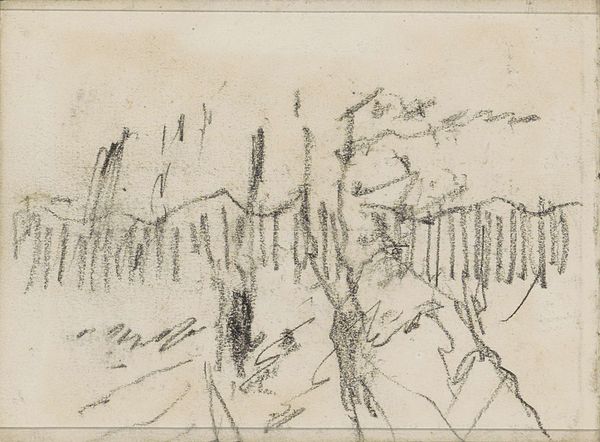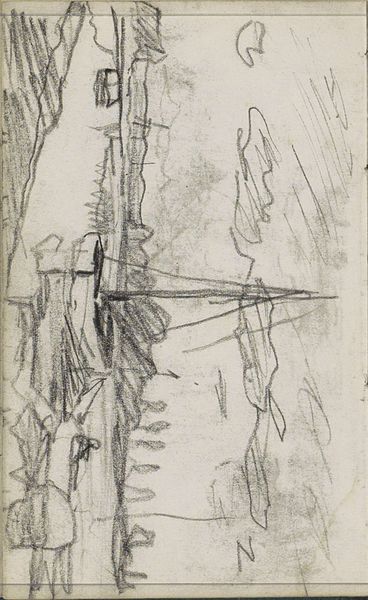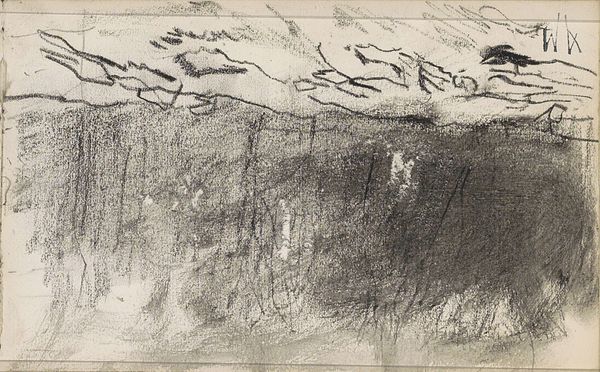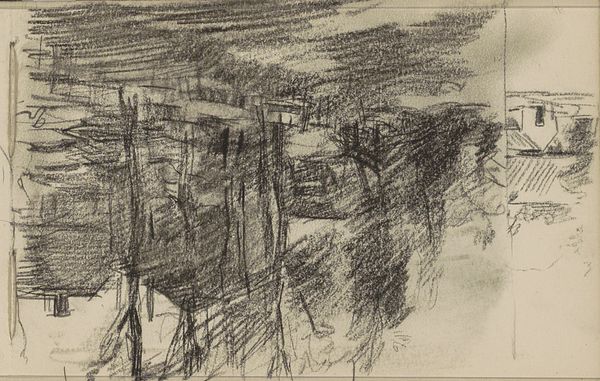
drawing, dry-media, pencil
#
drawing
#
impressionism
#
pen sketch
#
pencil sketch
#
landscape
#
dry-media
#
pencil
#
line
#
realism
Copyright: Rijks Museum: Open Domain
Curator: Welcome. Here we have a drawing titled "Landschap met bomen en struiken," or "Landscape with Trees and Shrubs," by Anton Mauve, created sometime between 1848 and 1888. It's a pencil drawing. Editor: My first impression? This feels unfinished, but somehow complete in its suggestion of a place. There’s a raw energy here, like the artist quickly captured a fleeting moment. The loose lines are almost rebellious against perfect representation. Curator: Indeed. Mauve was part of the Hague School, a movement deeply rooted in portraying Dutch rural life. Consider the social and political climate. The late 19th century in the Netherlands was marked by increasing industrialization, a growing urban population, and a longing for the idyllic countryside, a theme present in much of his work. This piece might reflect anxieties about the changing landscape and a yearning for simpler times. Editor: That connects with my impression, actually. This isn’t just any landscape; it’s a specific kind of landscape that resists idealization. Look at the tangled thicket of lines; it doesn’t romanticize the scene. It is much rougher and honest than that. I read in this the politics of visibility, even within something as seemingly apolitical as landscape art. Who gets represented, how nature gets used for social hierarchy and privilege are all implicated here. The drawing itself speaks to the marginal. Curator: It’s important to see how the institution played a role, too. The Rijksmuseum acquired the work and positioned Mauve as a chronicler of Dutch heritage. Museums, like the Royal academy and the Parisian Salons, were constructing ideas of national identity. This wasn’t just a personal expression; it entered the public sphere, influencing ideas about Dutch landscape and values. Editor: Precisely. What interests me most is how these spaces allowed marginalized views of society into its system in an attempt to highlight diversity while staying safe. This artwork, which presents us the nature through an unvarnished view, opens an occasion for discourse. Curator: Well, looking at it again through that perspective has shifted how I see it. Editor: Art has the remarkable ability to provoke dialogues across timelines. I will take with me a fresh perspective after this debate.
Comments
No comments
Be the first to comment and join the conversation on the ultimate creative platform.
